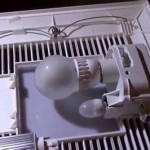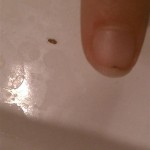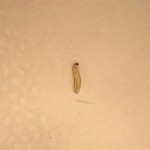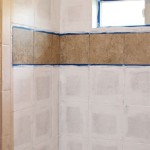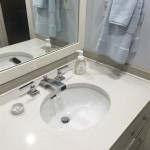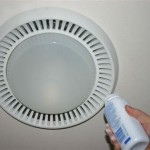How to Install a Bathroom Fan Light Kit: A Comprehensive Guide
Upgrading a bathroom exhaust fan to include a light fixture is a common and relatively straightforward home improvement project. A bathroom fan light kit not only improves ventilation by removing moisture and odors but also enhances the room's illumination, creating a more comfortable and functional space. This article provides a detailed, step-by-step guide on how to install a bathroom fan light kit, covering necessary tools, safety precautions, and the installation process itself.
Before beginning the installation process, it is imperative to prioritize safety. Working with electrical wiring requires caution and adherence to safety guidelines. The first and most crucial step is to turn off the power to the bathroom circuit at the main electrical panel. This is to prevent electrical shock during the installation process. Verify that the power is off by using a non-contact voltage tester on the existing wiring. If the tester indicates the presence of voltage, double-check the circuit breaker to ensure it is switched off and that you have identified the correct circuit. Never assume the power is off; always test to confirm before touching any wires.
Beyond electrical safety, physical safety also needs to be considered. Wear safety glasses to protect the eyes from falling debris or dust. Working above the head for an extended period can strain the neck and back, so take breaks as needed. If necessary, use a stable ladder or step stool to reach the fan housing safely. Ensure the ladder is placed on a level surface and that it is in good working condition.
Key Point 1: Gathering the Necessary Tools and Materials
Successful installation necessitates having all the required tools and materials readily available. This minimizes interruptions and ensures a smooth workflow. The specific kit will dictate the components; however, most include the light fixture, wiring connectors, mounting hardware, and installation instructions. Commonly needed tools and materials are listed below:
*Non-contact voltage tester:
Essential for verifying that the power is off. *Screwdrivers (Phillips and flathead):
Used for removing and installing screws. *Wire strippers/crimpers:
Used to strip insulation from wires and crimp connectors. *Pliers:
Useful for gripping and bending wires. *Electrical tape:
For insulating wire connections if needed. *Utility knife:
For scoring drywall, if necessary. *Ladder or step stool:
To reach the fan housing. *Safety glasses:
To protect eyes from debris. *Work gloves:
To protect hands. *Drill (optional):
May be needed if additional mounting holes are required. *Stud finder (optional):
To locate ceiling joists for secure mounting. *Pencil:
For marking locations. *New light bulb:
Verify that the bulb type is compatible for the light fixture.Carefully review the instructions included with the fan light kit before proceeding. Different kits may have specific requirements or steps that deviate from a general installation process. Understanding the instructions beforehand will prevent errors and ensure proper installation.
It is also recommended to inspect the existing exhaust fan to ensure its overall condition is satisfactory. Check for any signs of damage, excessive rust, or motor issues. If the existing fan is faulty or nearing the end of its lifespan, consider replacing the entire unit instead of just upgrading with a light kit. Replacing the entire unit could involve purchasing a fan with a light included.
Key Point 2: Removing the Existing Fan Grille and Preparing the Wiring
The first physical step in the installation process involves removing the existing fan grille. Most fan grilles are held in place by friction clips or screws. Gently pull down on the grille to release the clips. If screws are present, use a screwdriver to remove them. Once the grille is detached, set it aside carefully.
With the grille removed, the internal components of the fan will be exposed. Carefully examine the existing wiring connections. There will typically be a black (hot), white (neutral), and green or bare copper (ground) wire. Disconnect these wires from the existing fan motor or any existing light fixture, using a screwdriver or wire strippers as needed. Note the position of each wire before disconnecting them to ensure they are reconnected correctly to the new light kit. Using a permanent marker or taking a photograph can be helpful.
After disconnecting the wires, inspect their condition. If the wires are frayed, damaged, or have excessive exposed copper, strip back the damaged section and expose fresh wire. Use wire strippers to remove approximately ½ inch of insulation from the end of each wire. Be careful not to nick or cut the copper wire while stripping the insulation.
Depending on the design of the new light kit, the existing fan housing may need minor adjustments. Some kits require specific mounting brackets or adapters. Follow the instructions provided with the light kit to attach any necessary brackets or adapters to the existing fan housing. Ensure that the brackets are securely fastened to the housing. This may involve using screws, bolts, or other mounting hardware according to the installation instructions.
If the light kit requires access to the ceiling joists for additional support, use a stud finder to locate the joists near the fan housing. Mark the location of the joists with a pencil. This will help in determining where to secure any additional mounting hardware or supports.
Key Point 3: Installing the New Light Kit and Connecting the Wiring
With the existing wiring prepared and any necessary mounting brackets installed, the next step is to install the new light kit. Carefully position the light kit within the fan housing, ensuring that it aligns properly with the mounting brackets. Secure the light kit to the brackets using the provided screws or other fasteners. Tighten the screws firmly, but avoid over-tightening, which could damage the housing or brackets.
Now, connect the wiring from the light kit to the existing wiring in the bathroom. Use wire connectors (such as wire nuts) to make secure and insulated connections. Match the wires according to their color: black to black (hot), white to white (neutral), and green or bare copper to green or bare copper (ground). Twist the wires together tightly and then screw on the wire connectors. Ensure that no bare wire is exposed outside of the connector. If needed, use electrical tape to further insulate the connections.
Once all the wires are connected, carefully tuck them into the fan housing, ensuring that they are not pinched or strained. Position the light fixture within the housing and align it according to the instructions. Secure the light fixture to the housing using the provided screws or clips. Make sure the fixture is mounted securely and that it is not loose or wobbly.
After the light fixture is securely mounted, install the light bulb. Refer to the light kit's instructions for the correct bulb type and wattage. Screw the bulb into the socket carefully, avoiding over-tightening. Ensure that the bulb is seated properly in the socket.
Finally, reattach the fan grille to the fan housing. Align the grille with the housing and snap it into place, ensuring that the clips are securely engaged. If the grille is held in place by screws, reinstall the screws and tighten them securely.
After the physical installation is complete, restore power to the bathroom circuit at the main electrical panel. Turn on the bathroom light switch to test the new light kit. Verify that the light turns on and off properly. Also, check that the fan is operating correctly. If the light or fan does not work, turn off the power at the electrical panel again and re-examine the wiring connections. Ensure that all connections are secure and that the wires are properly matched.
Once the light kit and fan are functioning correctly, perform a final inspection. Ensure that all screws are tightened, that the grille is securely attached, and that there are no loose wires or exposed connections. Clean up any debris or dust from the installation process. The new bathroom fan light kit should now enhance both the lighting and ventilation of the bathroom.

Bookingritzcarlton Info Bathroom Fan Light Exhaust

Wiring Diagrams For A Ceiling Fan And Light Kit Home Electrical Bathroom Exhaust Switch

How To Install A Bathroom Fan Step By Guide Bob Vila
I M Trying To Install A New Bathroom Fan Light And Night Combo The Old Switch Box Was Double Gang With

Bookingritzcarlton Info Ceiling Fan Wiring With Light Bathroom Exhaust

How To Install A Retrofit Bathroom Vent Fan

How To Install A Bathroom Fan Step By Guide Bob Vila

Bathroom Exhaust Fans The Complete Guide By Fanco

Wiring Diagrams For A Ceiling Fan And Light Kit Bathroom Exhaust

Broan Nutone Part 744rnl White Adjustable 50 80 Cfm Ceiling Bathroom Exhaust Fan With Light Easy Change Trim Kit Energy Star Fans Home Depot Pro
Related Posts
